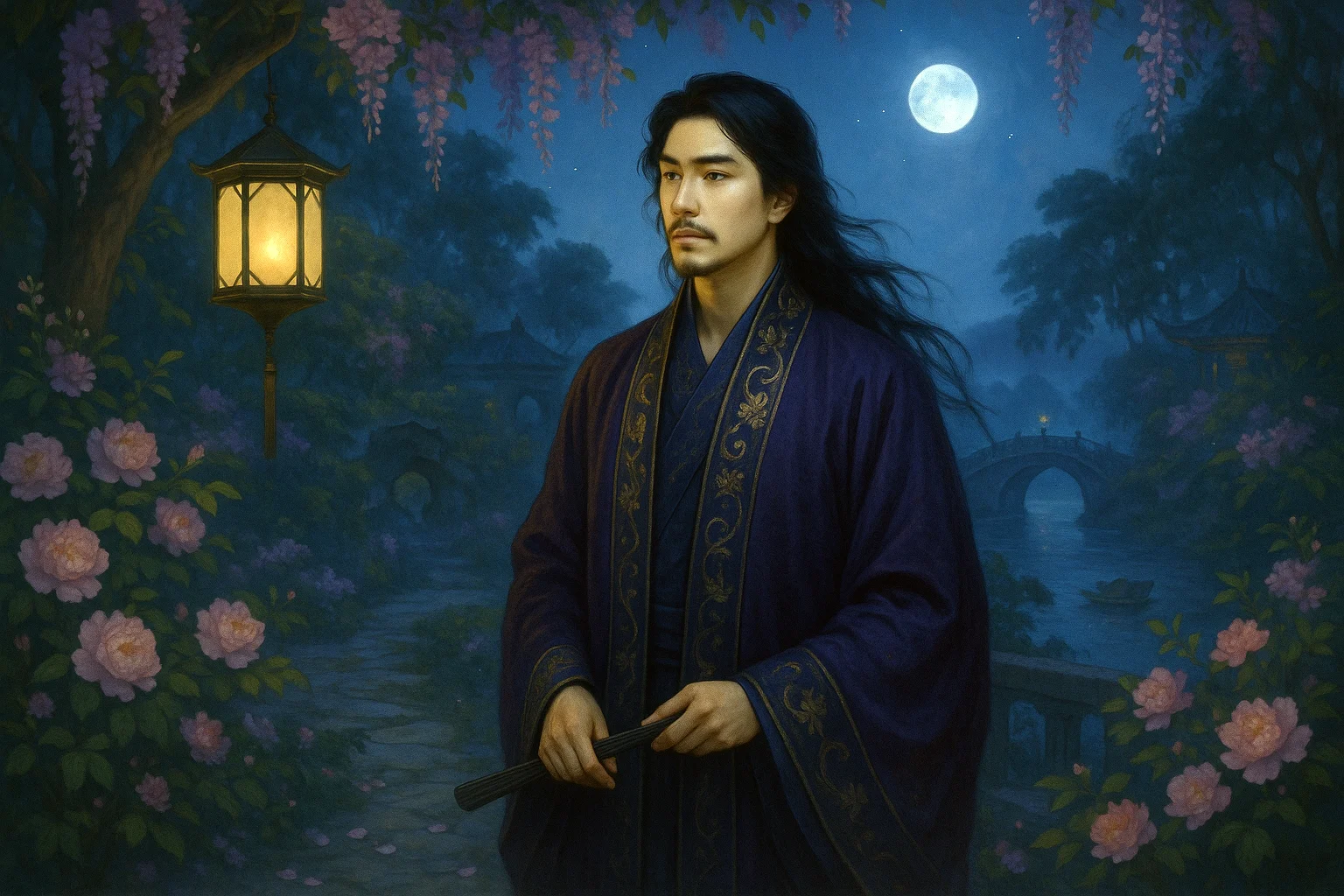Water shimmers in Northern Lake and by Southern Tower,
All kings surrendered with white flags to a new power.
Three hundred years have passed like a dream one and all;
No Coiling Dragon could keep kingdoms from downfall.
Original Poem:
「咏史二首 · 其一」
李商隐
北湖南埭水漫漫,一片降旗百尺竿。
三百年间同晓梦,钟山何处有龙盘。
Interpretation
This poem was written in the 11th year of the reign of Emperor Xuanzong (857) during the Tang dynasty. Li Shangyin, recommended by Liu Zhongying, was appointed as the Salt and Iron Commissioner and traveled to Jiangdong. During his time in Jiangdong, Li Shangyin wrote a series of historical poems, often using history as a mirror to satirize the corruption in the society and politics of his time, especially criticizing the king’s indulgence in luxury and debauchery that led to the ruin of the country.
First Couplet: “北湖南埭水漫漫,一片降旗百尺竿。”
(The water of North Lake and South Dike spreads endlessly, a flag falls from the hundred-foot pole.)
These two lines depict the expansive and endless waters of North Lake and South Dike, emphasizing the once-thriving capital of the Six Dynasties. The image of a flag falling from a high pole directly conveys the collapse of the Six Dynasties. Through this vivid representation, Li Shangyin deeply reveals the ruthlessness of history and the fall of a corrupt regime.
Second Couplet:“三百年间同晓梦,钟山何处有龙盘?”
(In three hundred years, the history is like a dream at dawn. Where on Mount Zhong is there a dragon's lair?)
This couplet uses rhetorical questions to reveal the changing history and failure of the Six Dynasties over three hundred years. Mount Zhong was once regarded as a sacred place for emperors, but after three hundred years, the rise and fall of the Six Dynasties proves that geographical advantages cannot guarantee the permanence of a dynasty. Through the metaphor of a “dream at dawn,” the poet emphasizes the illusionary and fleeting nature of history and dynasties.
Writing Features
In this poem, Li Shangyin skillfully blends scenic description with philosophical reflection, using landscapes to inspire historical insight. The poem begins by depicting North Lake and South Dike, showcasing the once-glorious ancient capital, and then directly expressing the fall of the Six Dynasties through the image of the “falling flag,” illustrating the ruthlessness of history. The last two lines refer to the “dragon’s lair” of Mount Zhong, questioning the limits of history and failure, and deeply revealing that geographic advantages like the “dragon’s lair” cannot guarantee the longevity of a dynasty. The poem seamlessly merges imagery and commentary, enhancing the historical awareness and political vigilance of Li Shangyin.
Overall Appreciation
This poem, through Li Shangyin’s depiction of the Six Dynasties' capital, conveys the vastness of history and the decline of dynasties. The poet uses detailed descriptions of the landscape combined with deep historical reflection to criticize the corruption and weakness of the contemporary society. Through the symbolic description of the “falling flag” and the rhetorical question about “Mount Zhong,” the poet emphasizes that the rise and fall of dynasties are not just related to geography and famous landmarks, but are closely linked to the character of rulers and political corruption. The poem reveals the intertwining of the “dawn dream” of history with the present decay, prompting deep reflection.
Insights
This poem reminds us that the rise and fall of history are not only related to external factors like geography and mountains but are intimately connected to the character of rulers and political corruption. By reviewing the rise and fall of the Six Dynasties, Li Shangyin conveys a profound political alertness: the fate of a nation depends not merely on the so-called “geographical advantage” or external circumstances, but more importantly on the clarity and decisiveness of its rulers. This is not only a summary of history but also a warning for contemporary politics, urging us to draw wisdom from history to avoid repeating past mistakes.
Poem Translator
Xu Yuan-chong (许渊冲)
About the poet

Li Shangyin (李商隐), 813 - 858 AD, was a great poet of the late Tang Dynasty. His poems were on a par with those of Du Mu, and he was known as "Little Li Du". Li Shangyin was a native of Qinyang, Jiaozuo City, Henan Province. When he was a teenager, he lost his father at the age of nine, and was called "Zheshui East and West, half a century of wandering".












